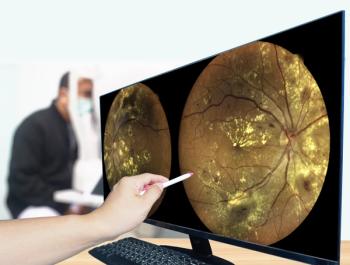November is once again being recognized as Diabetic Eye Disease Awareness Month in an effort to educate the public on the effects of diabetes on vision, risk factors and treatment options.
November is once again being recognized as Diabetic Eye Disease Awareness Month in an effort to educate the public on the effects of diabetes on vision, risk factors and treatment options.
Prevent Blindness recently launched a new, no-cost resource, the “Diabetes and the Eyes” educational toolkit. The resource includes downloadable fact sheets, shareable infographics for social media, and financial assistance resources to increase access to eye care. For healthcare professionals, community organizers, and more, an educator course is also available, including a PowerPoint presentation and script. These materials were made possible by funding from the Allergan Foundation.
For the second consecutive year, Oxurion NV is partnering with Prevent Blindness to raise awareness and provide education to the public.
The American Diabetes Association (ADA) has broadened the topic, labeling November “Diabetes Awareness Month,” has updated its Standards of Medical Care in Diabetes for 2019, and is raising awareness via its “Count Me In” program. “Beyond Type 1” has noted World Diabetes Day (WDD) is celebrated globally on November 14 to raise awareness about both Type 1 and Type 2 diabetes. This group has quote boards on Pinterest, educational posters about the systemic disease available for download, and fact cards.
These groups are not alone in promoting awareness...
The National Eye Institute’s National Eye Health Education Program promotes several downloadable materials for practices, including a statistics and data on diabetic retinopathy in the United States, and reminders for people with diabetes to stay on “TRACK.”
The American Academy of Ophthalmology (and the ADA) recommend patients with type 1 diabetes receive an eye exam within the first 5 years after a diagnosis, then one dilated eye exam per year. The groups recommend those with type 2 diabetes receive a dilated eye exam as soon as diabetes is diagnosed, and then once yearly.
The American Optometric Association also promotes patient education by providing simplified explanations about causes, diagnoses, and treatment.
The American Society of Retina Specialists has fact sheets available for download for patients, including ones specific for diabetic retinopathy. In its Fact Sheet on DR, ASRS notes the FDA has warned that some medications can cause macular edema, including pioglitazone and rosiglitazone, each of which increases the risk of developing macular edema by 3 to 6 times.
Outside the United States, national healthcare services educate the population on diabetic eye conditions with, for example, videos from the United Kingdom’s National Health Service that explains what happens when people get a diabetic eye screening. In Canada, the national health service has published a detailed report that details facts and figures on the health impact of diabetes on Canadians, including that 11% of the population has diabetes.












































